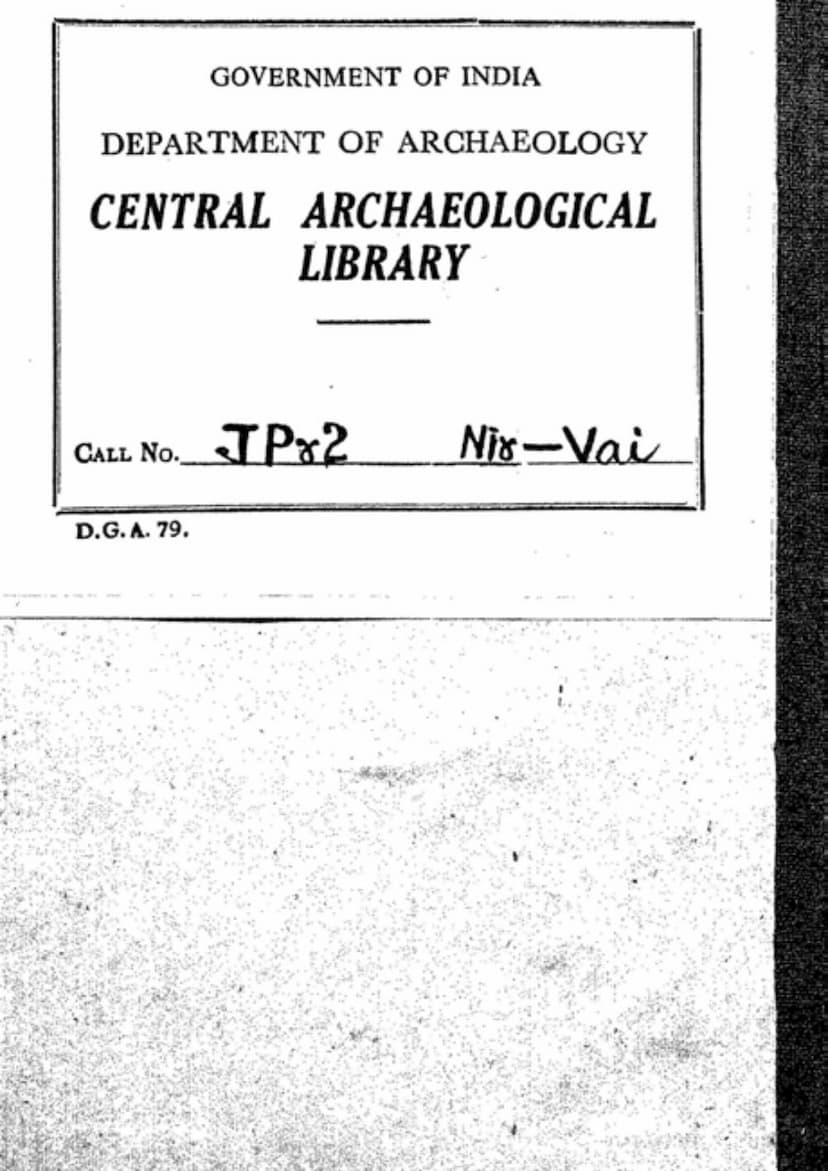Agam 19 Upang 08 Niryavalika Sutra
Added to library: September 1, 2025
Loading image...

Summary
This document is an edited version of the Jain text "Nirayavaliyao" (also known as Niryavalika Sutra), prepared for university students by Dr. P. L. Vaidya.
Here's a breakdown of the key aspects:
- Title: Agam 19 Upang 08 Niryavalika Sutra
- Author/Editor: P. L. Vaidya
- Publisher: P. L. Vaidya
- Purpose: Edited for university students, specifically for the First Year's course in Arts of the Bombay University for the year 1933.
- Significance: It is presented as the "first critical edition of the last five Upangas of the Jain Canon."
- Previous Editions: The introduction mentions earlier editions by Dr. S. Warren (1879), Rai Bahadur Dhanapati Sing (1885, with commentary), and the Agamodaya Samiti of Surat (1922). However, Vaidya notes that none of these satisfied the needs of critical scholars or university students due to limitations in content or a lack of critical scholarship.
- Methodology: Dr. Vaidya utilized all three previous editions and collated a manuscript of the bare text from the Bhandarkar Institute, Poona. He also consulted other manuscripts of the text, its commentary (Candrasuri), and an Avacuri in old Marwari. He also cross-referenced passages with other Jain Agamas.
- Textual Conventions: Vaidya explains his approach to certain Prakrit linguistic features, such as consistently retaining the initial 'a' and following Professor Jacobi's rule for double nasals. He also mentions his selection of variants and his preference for retaining vowels as in Sanskrit prototypes when supported by his best manuscripts.
- Structure of the Work:
- The "Nirayavaliyao" is identified as the last five of the twelve Upangas of the Jain Canon.
- It is believed that these five works originally had independent existences but were later combined under a common title.
- Vaidya notes that the title "Nirayavaliyao" is most fitting for the first section.
- He then briefly describes the content of each of the five sections (Upangas):
- Nirayavaliyao (also known as Kappiya): Narrates the deeds of people who went to hell as a result of their actions. It details the story of King Seniya's sons, particularly Kuniya and his step-brothers, and their subsequent fates.
- Kappavadimsiyā: Continues the narratives from the first section, focusing on the sons of those who went to hell. They become monks and attain heavenly abodes due to their religious practices.
- Pupphiya: Focuses on how religious practices lead to heavenly rebirths, including stories of householders and Brahmins achieving divine status.
- Pupphacūlā: Features stories of ladies who, as disciples of a band of nuns called Pupphacūlās, attained heavenly regions. However, some had drawbacks in their practices, preventing immediate emancipation.
- Vanhidasā: Contains twelve chapters (though the title suggests ten) on the Vrsnis (a clan). It narrates stories of the sons of Baladeva, detailing their spiritual journeys.
- Appendices: The edition includes two appendices:
- The first appendix provides references to passages not fully quoted in the main text.
- The second appendix gives the story of Mahabala from the Bhagavati Sutra, as it's frequently referenced in this work.
- Glossary and Notes: A glossary of words with their Sanskrit and English meanings is provided, along with explanatory notes to aid understanding.
- Publication Details: The book was printed by Shri Ganesh Printing Works, Poona, and published by Dr. P. L. Vaidya.
In essence, Dr. P. L. Vaidya's edition of the Nirayavaliyao aims to provide a scholarly and critically edited text of this important Jain scripture, making it accessible and understandable for university students and researchers, with detailed explanations of its content, structure, and linguistic nuances.